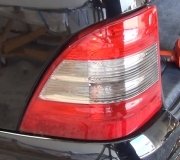That's what is meant by "CAN BUSS" or "compatible. Those have a resistor or circuitry built in to show the computer the bulb is indeed working. If you use regular LED bulbs, you can add the resistor to each bulb's circuit. Often you can find them with built-in adapter sockets so you can plug in the resistor to the vehicle's connector, then plug the LED bulb into the resistor harness. Some don't come with the connector plugs. Those have to be spliced into the original harness and can be used on any brand or model, when needed.
These are often referred to as "ballast" resistors. If you search on eBay, I suspect you'll find plenty to choose from. One thing I don't approve of is most of them come with the squeeze-together Scotch-Lok splice connectors. Those do not seal out moisture. That's important in the headlight area. Instead, strip the original wires, splice the resistor to them, then seal the splices with moisture-proof heat-shrink tubing. Don't use electrical tape. That will unravel into a gooey mess on a hot day.
You can also accomplish the same thing by splicing in a second connector with wires long enough to reach behind the headlight housing, out of sight, and plug in a regular bulb. That bulb will flash, like normal, where it can't be seen, and the LED bulb will flash in the headlight housing.
If you know anyone who likes to take electronic circuit boards apart, especially from older tvs, they will likely have boxes and boxes of power resistors. You can splice one of those in too, between the turn signal wire and the ground wire, near the bulb. With a regular bulb, commonly a 1957 brass base or the newer 3157 flat plastic base, the brighter filament for signals and brake lights draws one amp. Using Ohm's Law, that means that filament is 12 ohms, so you'd want to splice in a resistor close to that value. Typically, I'd expect a 12 to 15 ohm resistor to work fine. (Ohm's Law is a set of 12 related formulas for electrical calculations). In this case, Resistance, (ohms), equals volts divided by current (amps), or R=V/A. 12 / 1 = 12 ohms.
You also have to consider the power rating of the resistor. In simple terms, it has to be high enough so that resistor can dissipate the heat it develops. Power (watts), equals volts times amps, (P=VA). 12 volts times one amp equals a 12 watt resistor. That's pretty large so it will commonly look like a small rectangular ceramic block with a wire coming out each end. Since signal lights are only on part of the time, that gives the resistor time to dissipate its heat. You can get by with a 10 watt resistor. With power ratings, you can go higher if you wish or if that's all you can find in the parts box. If you go too much lower, the resistor might overheat and burn open over time. Regardless, that resistor can get just as hot as a regular 3157 bulb, so be sure it's placed where it can't melt a plastic part.
Monday, April 21st, 2025 AT 1:02 PM


